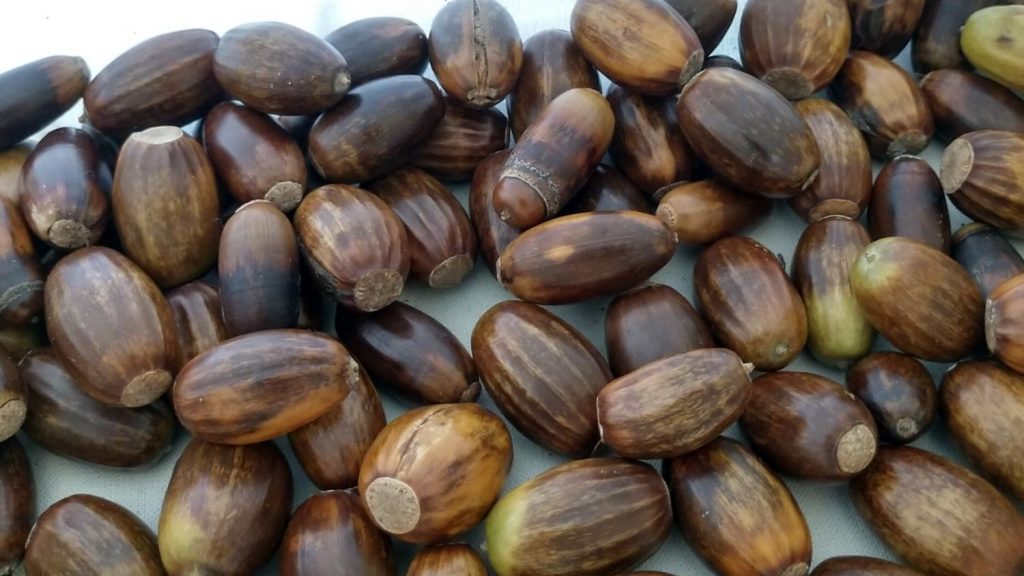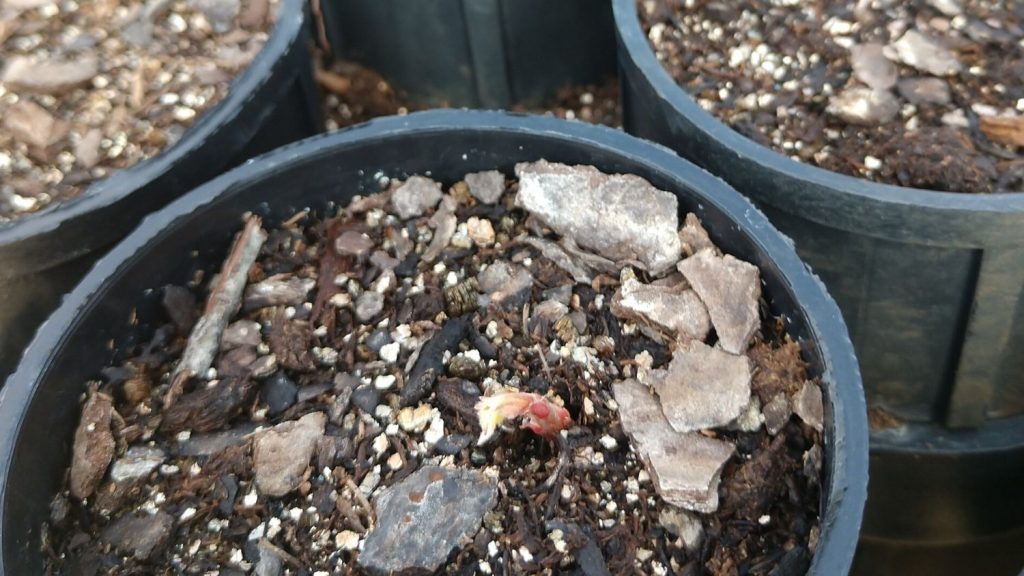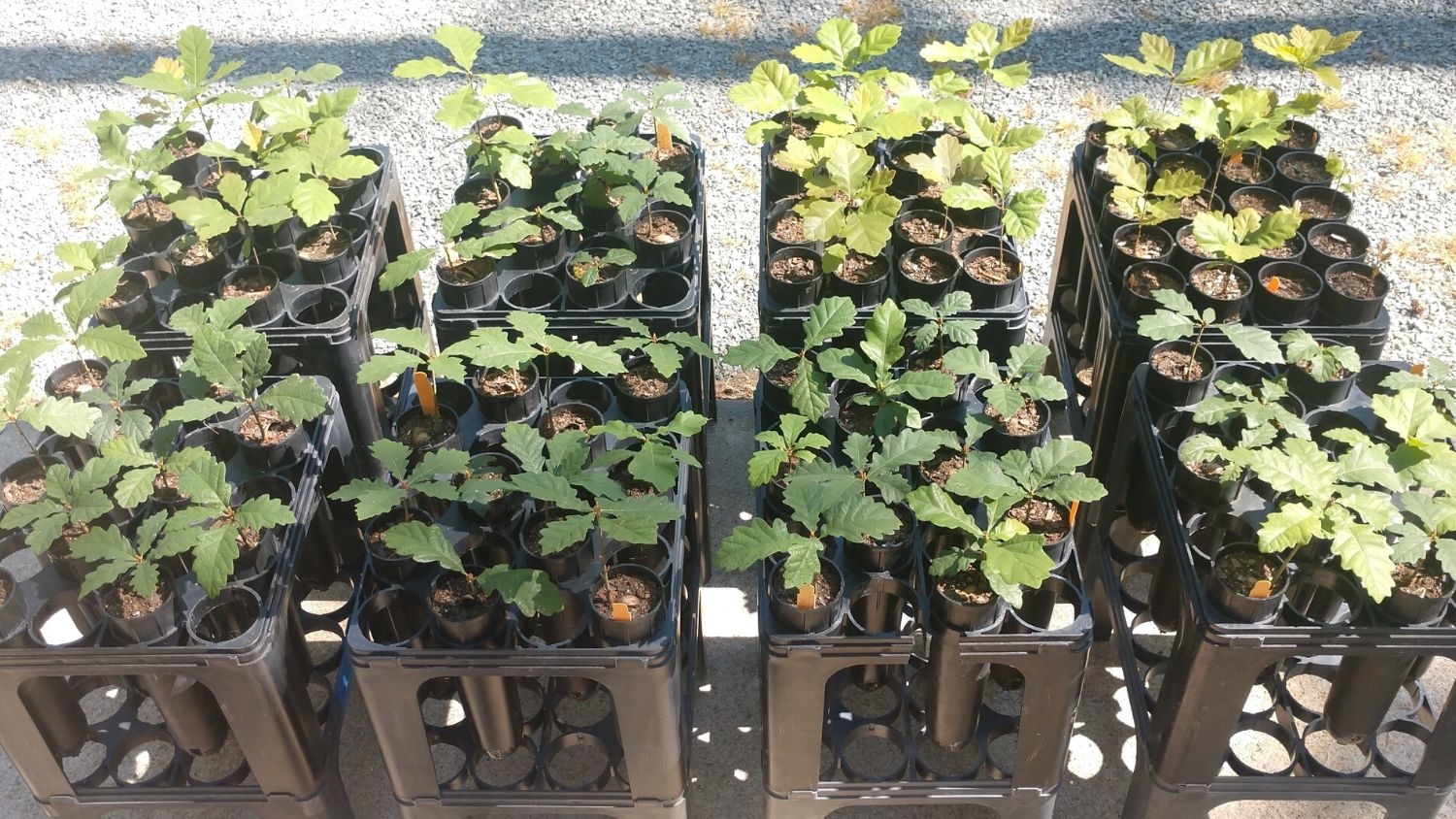Editor’s Note to update the original story from June 2020: On Monday, Nov. 29, 2021, the NC State Marine Corps Naval ROTC planted oak saplings outside Reynolds Coliseum that were grown from acorns gathered in France, and nurtured into young trees at NC State. They gathered with NC State experts and leaders to honor the Marine Corps legacy.
You may not know it to look at them, but a collection of young oaks that have sprouted in an NC State greenhouse are part of a vision to honor the legacy of U.S. Marine Corps men who died in the Battle of Belleau Wood during World War I.
The oaks are the result of a collaboration with NC State’s Cooperative Tree Improvement Program, which helped grow the trees from acorns gathered in Belleau Wood itself.
“We envision these trees will be planted all over Marine Corps bases and facilities around the United States to commemorate the men who died in the battle. I’m just excited to be a part of that,” said Austin Heine, operations manager for the Cooperative Tree Improvement Program and now the unofficial oak tree grower.
Treasuring a legacy
U.S. Marines in the 5th and 6th Regiments, with the U.S. Army artillery, played a key role in the Allied victory that drove German forces out of Belleau Wood in June 1918 during World War I.
The battle is significant in the history of the Marine Corps, and Marines continue to honor that legacy today. It’s during that battle that Marines earned the name the “Devil Dogs.” Marines in those units are decorated with a special French military cord called the fourragère.
“As Marines, we absolutely treasure our history,” said John Giltz, a retired colonel in the U.S. Marine Corps who is collaborating on the effort. “That was the battle that set the Marine Corps apart, and set the unit apart. It can serve as inspiration when you’re trying to draw out the Marines’ best in the bleakest of times. We honor those who went before us, and we try to live up to them.”
The idea to bring back a piece of Belleau Wood first occurred to Giltz in 2001. He said he huddled around a kerosene heater with another officer, talking about a storm that knocked some of the trees in Belleau Wood down. As part of the 6th Marine Regiment, his unit’s legacy was linked to the battle.
“We thought: Wouldn’t it be neat to get that wood?” Giltz said. “As we talked, our ideas got more and more creative.”
That year, he was part of an effort to bring transplanted saplings to Camp Lejeune, but he said the trees didn’t survive.
“It was always in my mind that if I had the chance I would do it again, and do it right, which is to say that I wouldn’t do it myself,” he said.
In the fall of 2017, Giltz reached out to Elizabeth Snider, forest manager with NC State’s College of Natural Resources. Ultimately, he was connected with experts in the Cooperative Tree Improvement Program to help with the permitting, inspections and growing of oak trees from Belleau Wood.
“There’s no one else out there that I could think of who would have wanted to take this on entirely between the permitting, growing and expertise,” Giltz said. “Quite frankly, it wouldn’t be happening without their help.”
Kitt Payn, assistant professor and director of the Cooperative Tree Improvement Program, said legacy and partnership are two important values for the cooperative. Those values have contributed to 64 years of success working to improve the value of forest trees for landowners and citizens.
“Therefore, when Col. Giltz of USMC reached out to our program and invited us to partner on this project, we felt privileged to collaborate,” he said.
Expert care and coordination
Giltz contacted representatives from the U.S. Marine Corps in France to have several hundred acorns collected from Belleau Wood.
All plant material entering the country has to be carefully inspected by plant pest and disease experts, and only about half of the acorns made it through the rigorous inspections and sanitization process, said Tori Batista Brooks, assistant director of administration for the cooperative.
Brooks helped with the permitting process for the U.S. Department of Agriculture and provided information needed for the inspections.
“It is vital that we keep pests and diseases from other locations around the world out of the United States because we may not have the natural defenses or predators to manage them,” she explained.

When the acorns arrived in Raleigh, they were placed in the care of Heine.
When Heine finally got the acorns, he wasn’t sure if they would make it.
He soaked them in water to encourage them to start growing, and then planted them in tubes of soil at the greenhouse at the Horticulture Field Laboratory.

At long last, he saw little stems poking up.
“When they started peeking up through the soil, I was pretty excited,” he said. “I sent emails to John saying, ‘They lived!’”

He transferred them into 7-gallon pots when they developed roots. The saplings are now about 8 inches in height, but Heine’s expectations are tall.
“They will start jumping now that they’re in bigger pots,” he said.
It could take a year or two for them to be ready to plant, Heine said.
Shifting focus from pine trees to oaks
Growing oak trees is a departure from Heine’s normal focus on pine trees.
He’s operations manager for the cooperative, which focuses on improving loblolly pine forests in the Southeast in order to increase their productivity. Loblolly pines are used for lumber as well as paper products.
The cooperative leads research into strategies for selecting and breeding trees so they have greater volume, and grow straighter and more disease-resistant.
Their work involves understanding the trees’ genetics, as well as incorporating biotechnology strategies.
“Our primary function is to keep improving the genetics of trees that landowners are planting around the Southeast,” Heine said. “If you have trees that are growing fast and produce more wood, you can produce the wood that we need on less land,” he added.
Heine grows trees at the field labs for research to help identify superior tree traits. He got involved with the cooperative as an undergraduate at NC State, and stayed as a staff member while he pursued his master’s, and now his doctorate.
A love of trees motivates his work.
“I’ve never gotten acorns from anywhere outside the country before,” Heine said, explaining he was excited to work with the oak trees.
Heine is confident that the young oak trees will make it. Eventually, he will transfer the trees to another organization to determine where they will be planted to honor the Marines who fell at Belleau Wood.
“I’m a part of this effort to keep the memory alive of these guys that died in battle,” Heine said.
“It means a lot to be able to bring back a piece of that place,” Giltz said.
- Categories:



